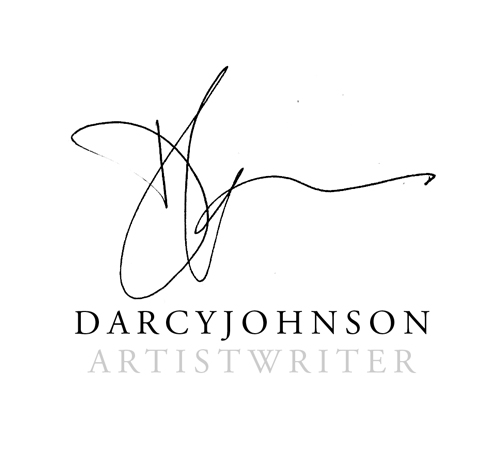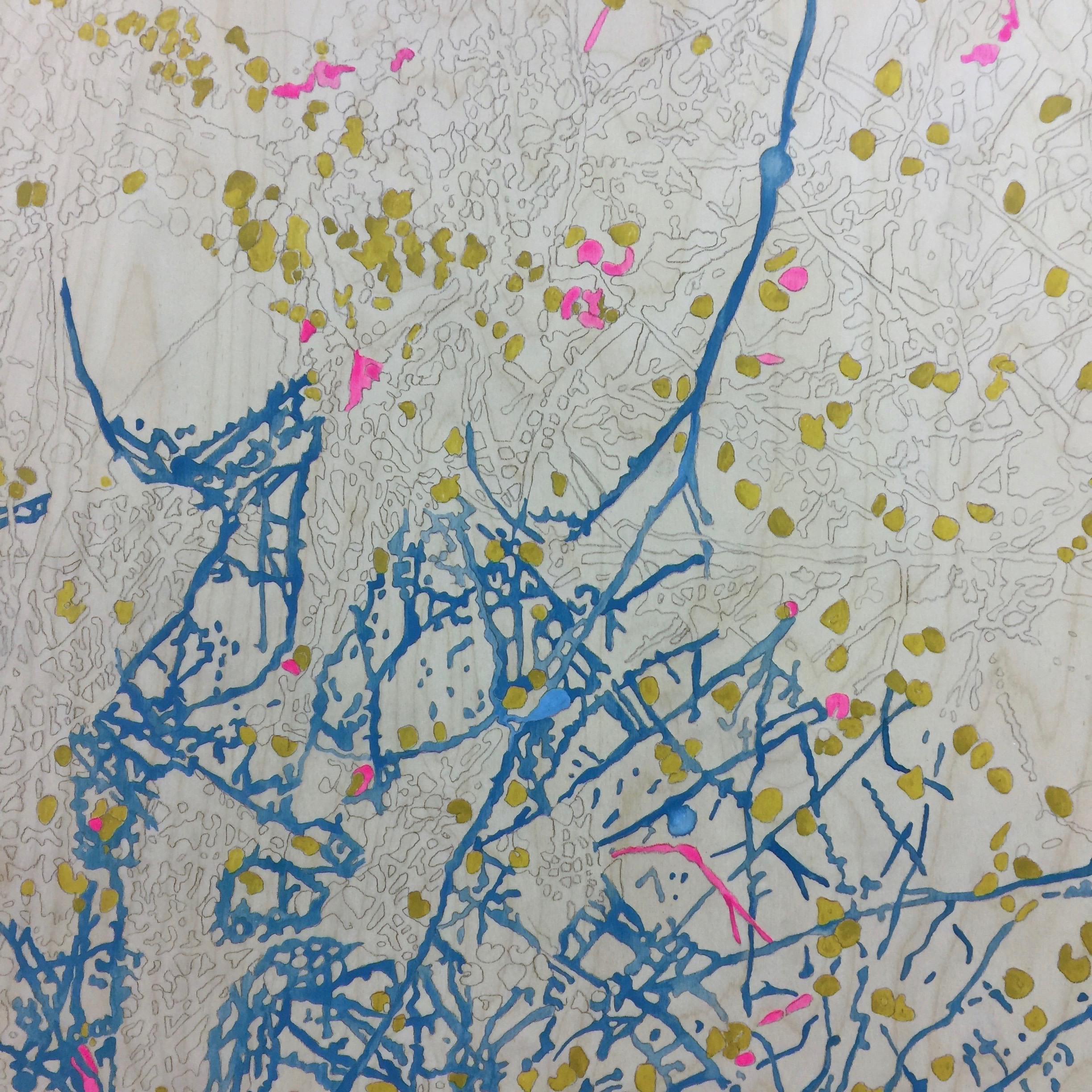SciArt Residency Blog Post #8, October 28, 2018
Navigating
I have started painting the drawing of the projected image I talked about in last week’s blog. The digitally rendered microscopy image I am working from, “Mapping Manhattan”, is very complex and so the initial drawing is like an imperfect maze. I’m not trying to replicate Yana’s original microscopy image but instead am just watching how it evolves through the stages I have
imagined. The painting process demands that I pay close attention to the original image because progress is slow. I, therefore, have a lot of time to think about what I am doing.
“Mapping Manhattan”, collaboration by Yana Zorina and Darcy Elise Johnson, microscopy, digital media
“Remapping Manhattan Day 1” by Darcy Elise Johnson, 36” X 36”, acrylic inks on wood
I started with the magenta because it has a distinct pattern and there is less of it than the other colors. I used the magenta structures to orient myself to the whole space and then added the yellow cell bodies. My drawing is such a mass of tiny lines that I have to hunt for every structure. It felt like I was star gazing. I had to find a clear recognizable constellation of structures and work outward from that, painstakingly filling in more and more detail. My drawing will relate to the original electron microscopy image that Yana made but at this point, I am most interested in the degree to which that happens. At this point, it is emerging as a map which reflects perfectly my sense of trying to navigate its structure.
beginning with the blue
This process interesting because it allows me to not only get to know the image better but to observe myself observing the process. I thought about scientific observation mainly. This is because every time we take a data set and translate or distill it, we lose something or at the very least, change something. It is the natural evolution of the information processed by our creative brains that defines the final character of what we call knowledge of the “natural” world. While painting, I could see my self constantly interpreting the image, making choices about what to emphasize and what to forget about. At times, I felt like I was blatantly fudging the data.
fudging the data
So, after a number of hours spent “dissecting” my drawing, I was more convinced that the role of scientific observation is to preserve the original data as well as possible because otherwise our creative brains will shape and change it without our conscious awareness. If we are creatively structuring of our reality with only oblique reference to the already filtered data of our senses, we need the rigors of science to keep us in check. Science puts together a solid scaffold we can then jump off of in the search for creative ideas that often must lie outside of scientific methodologies, in scientific theory, new experimental approaches and the arts which can inform all of these.
“Remapping Manhattan Day 2” by Darcy Elise Johnson, 36” X 36”, acrylic inks on wood





